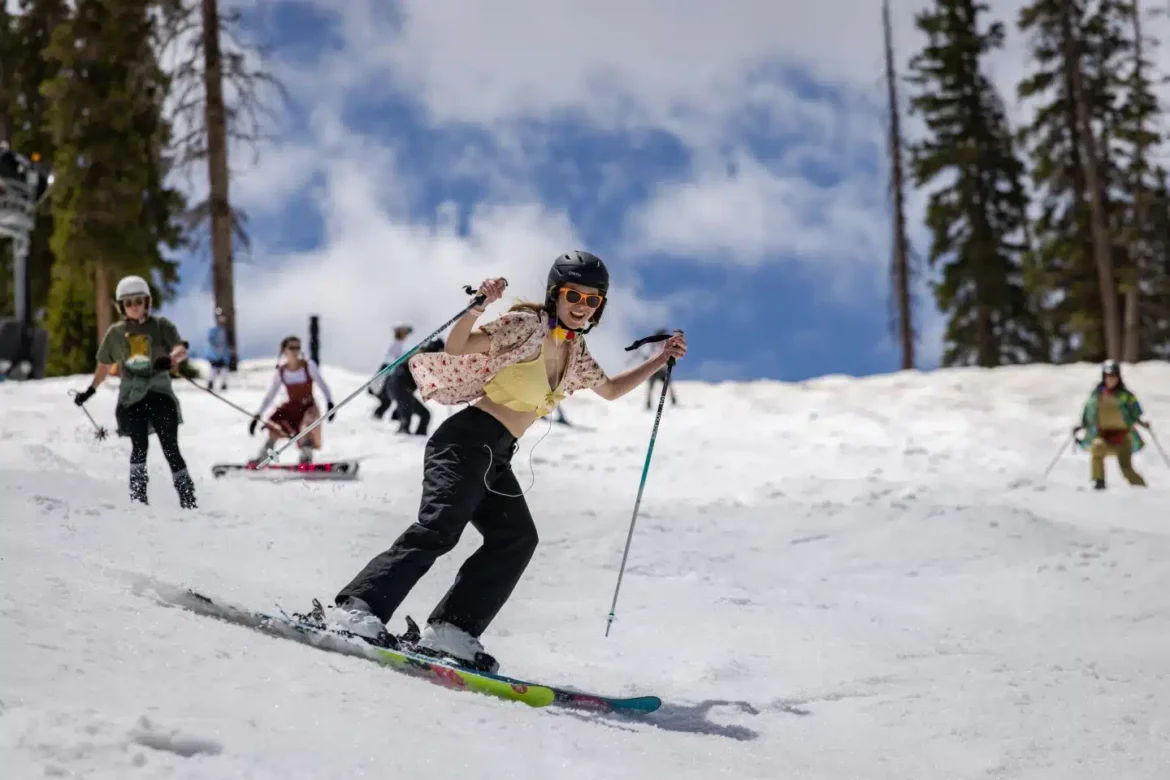Table of Contents
Skiing is an exhilarating sport that combines speed, skill, and beautiful alpine scenery. If you’ve ever wondered, how hard is skiing, you’re not alone! Skiing can seem daunting, especially for beginners unfamiliar with the mountains and snowy conditions. But here’s the good news: while skiing does come with a learning curve, it’s accessible with the right guidance, practice, and mindset. In fact, many find that skiing is easier to learn than other winter sports, like learning to snowboard. Here’s a beginner’s guide to help you understand what to expect, the basic skills to master, the importance of ski lessons, and how you can quickly and safely hit the slopes.
Understanding the Basics: What Makes Skiing Difficult?
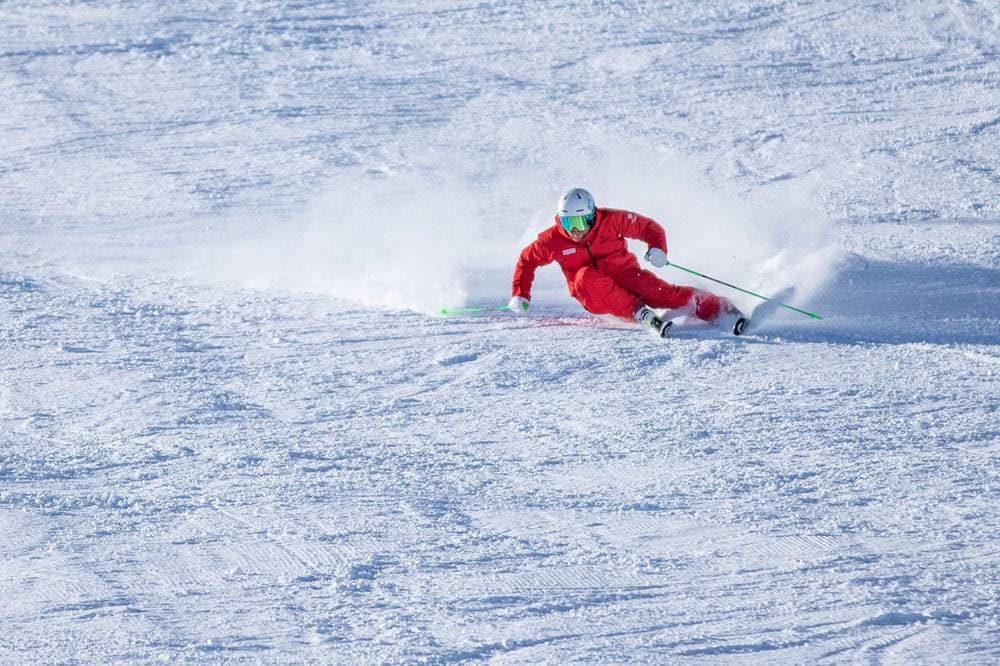
Skiing challenges your balance, coordination, strength, and endurance. When you first start, keeping your balance while gliding downhill on two skis can feel unnatural. Additionally, learning to control your speed, navigate turns, and stop safely requires practice and confidence. Let’s break down the aspects that can make skiing seem difficult for beginners:
Balance and Posture
Skiing requires maintaining a centered balance on your skis, which is often counterintuitive for beginners. You’ll need to keep your knees slightly bent and lean forward rather than backward, which helps you stay in control.
Coordination
Skiing involves coordinating multiple body movements at once, such as shifting your weight to initiate turns and keeping your arms forward for balance.
Strength and Stamina
Skiing is a full-body workout, particularly taxing on the legs. You’ll need strength in your legs and core to hold a steady posture and maintain control.
Fear and Confidence
It’s natural to feel apprehensive at first, especially when going downhill at speed. Building confidence gradually will help you progress.
How Difficult Is Skiing for a Beginner?
One of the first questions people ask when considering skiing is, “How hard is it to ski?” The answer varies from person to person, but the learning curve for skiing is generally more gradual than some might think. In the beginning, parallel turns can seem tricky, but with practice, they’ll become second nature. You will find yourself focusing more on the mechanics of the turn itself at first rather than speed or style. Once you get the hang of it, parallel turns will allow you to ski more efficiently, and you’ll gain more confidence.
Ski Lessons for Beginners
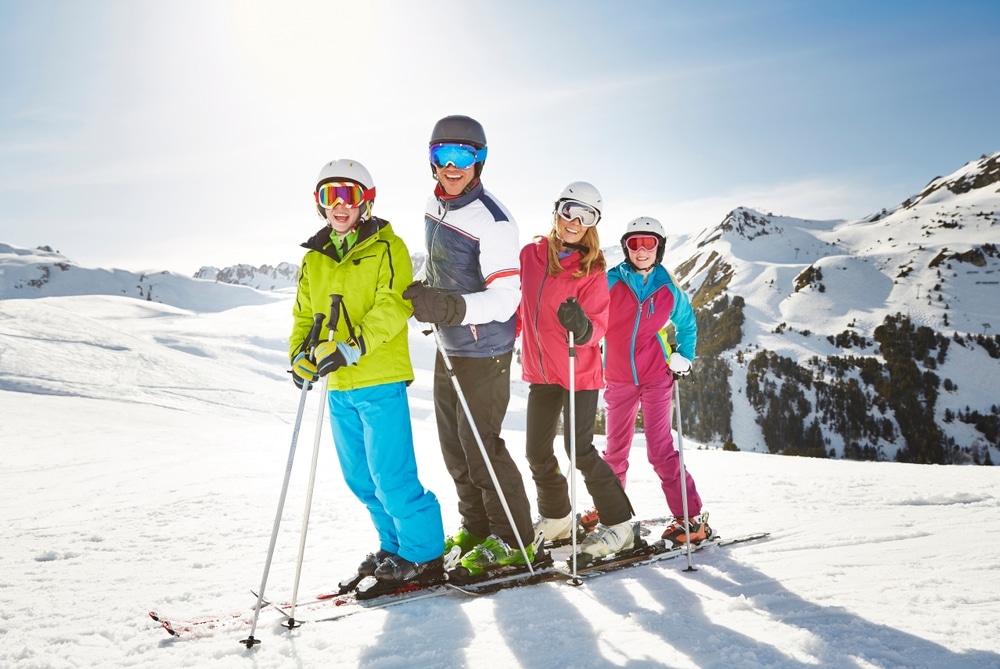
When it comes to learning any new sport, ski lessons are a must. If you’re just starting out, ski lessons are the best way to get the most out of your experience. Many ski resorts offer both private ski lessons and group ski lessons, catering to different preferences and budgets. Group lessons are often more affordable, while private ski lessons allow for more personalized attention and faster progression.
The first few days of ski school will focus on learning how to balance your skis, control your speed, and make turns. You’ll likely start on green runs, which are gentle slopes ideal for beginners. The idea is to build a foundation of skills before advancing to steeper and more challenging terrain.
Key Techniques for Beginners
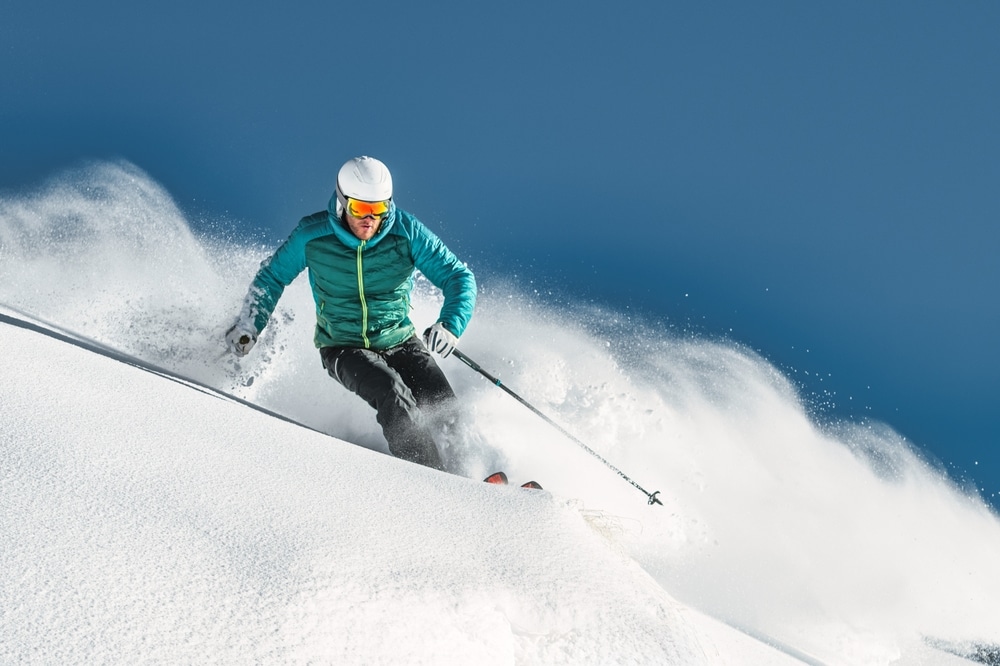
Skiing is challenging for beginners, but uphill skiing, or “skinning,” adds a whole new level of difficulty. Understanding a few fundamental techniques will help you feel more in control on the slopes.
1. The Snowplow (Pizza) Stop
This technique is essential for controlling speed and stopping
- Position your skis in an inverted “V” shape (like a slice of pizza) with the tips together and tails apart.
- Apply pressure on the inner edges of your skis to slow down. The more you angle your skis, the greater the braking effect.
- Practice on gentle slopes until you can confidently control your speed and come to a full stop.
2. Turning
Turning helps you navigate and control your speed on the mountain. The most common turning technique for beginners is the wedge turn:
- Start in the snowplow position.
- Shift your weight slightly onto the ski that’s on the opposite side of the turn. For example, if you’re turning left, apply more pressure to the right ski.
- Allow the turn to happen naturally, guiding your skis into a curved path as you shift your weight.
3. Getting Up After a Fall
Falling is part of learning, so don’t be discouraged. To get back up:
- Position yourself so that your skis are perpendicular to the slope (sideways, not pointing downhill).
- Use your hands to push yourself up or grab one ski pole to assist if needed.
4. Riding the Chairlift
Getting on and off a chairlift can be tricky for beginners. Here are some tips:
- Position yourself to glide forward when it’s your turn to board.
- Sit down as the chair approaches, and hold on to the backrest or bar.
- Keep your ski tips pointed up to avoid tripping when disembarking.
How Long Does It Take to Learn Skiing?
Many beginners wonder how long it will take them to be comfortable on the slopes. The answer varies, but most people can expect to spend at least a few days of ski school before they feel confident enough to enjoy themselves without feeling stressed. The time it takes to feel comfortable varies from person to person. Generally, after a few lessons and practice sessions, most beginners can manage green slopes with confidence. Mastering basic techniques usually takes around 1-3 days, while intermediate skills will require a few more trips to the mountain.
Progressing from Beginner to Advanced Skier
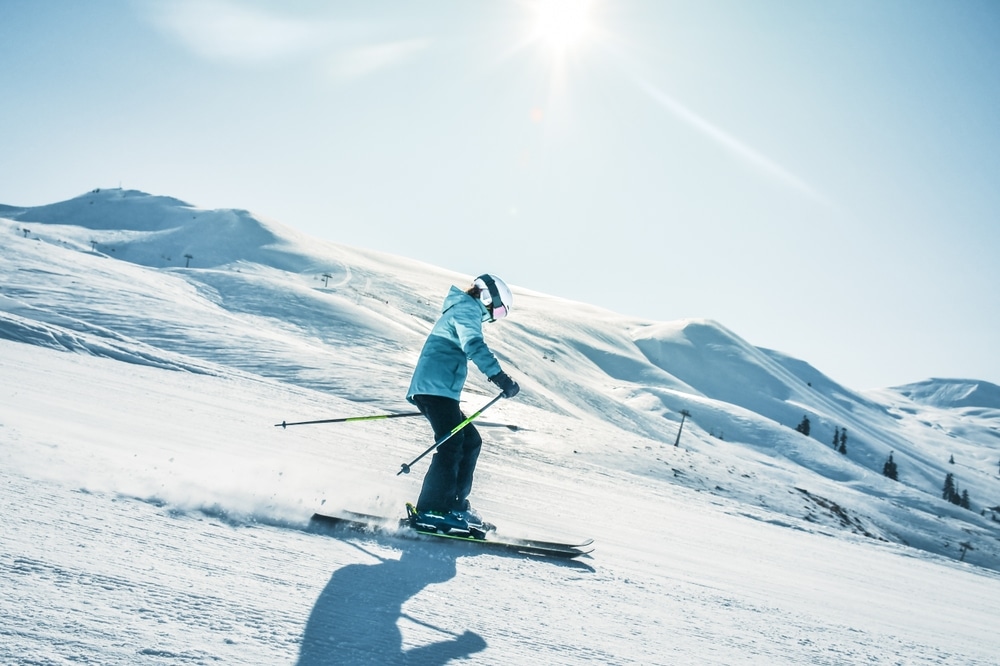
As you get more comfortable on the slopes, the next step is to move beyond the green runs and begin exploring some more advanced terrain. It’s important to avoid pushing yourself too quickly—especially if you’re just starting out. Moving from beginner ski slopes to more advanced trails, like challenging terrain, should be done gradually and with caution.
Once you’ve mastered the basics and can consistently make parallel turns, look into ski holidays that offer a mix of easy and moderate runs. For skiers who have become more proficient, advanced skiers can enjoy steeper, more exciting slopes. But remember, skiing on challenging terrain requires both skill and experience, so take your time to develop your technique before tackling the more difficult trails.
The Rewards of Learning to Ski
Skiing offers a thrilling connection with nature, exercise, and a sense of freedom. Despite the learning curve, each small victory, from making your first turn to confidently navigating a slope, is incredibly rewarding. Plus, skiing opens the door to exploring beautiful mountain destinations and enjoying a fantastic winter activity.
Conclusion
So, how hard is skiing? Skiing can be challenging at first, but with the right mindset and some ski lessons, you’ll be well on your way to conquering the slopes. Although skiing is easier to learn than many people realize, it still requires patience, practice, and the willingness to accept the learning curve. With the right technique, guidance from professional instructors, and plenty of practice, you’ll be ready to enjoy everything the slopes have to offer. Take things step by step, invest in quality lessons, and keep a positive attitude. Soon enough, you’ll be gliding down the slopes with confidence, enjoying the thrill of the mountains.

